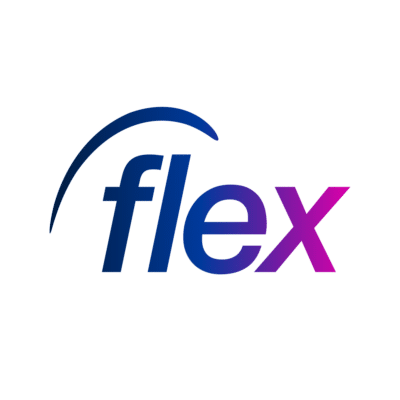
- Defining quality standards for 2025’s workforce
- Creating robust quality assurance processes
- Technology-enabled quality management solutions
- Building a quality-focused culture
- Effective training and development for quality enhancement
- Quality management for hybrid and remote teams
- Performance measurement and quality analytics
- Managing quality across contingent and permanent workforces
Maintaining consistent worker quality is vital for any organization, directly influencing performance, customer satisfaction, and hiring costs. As workforce dynamics shift, with the integration of hybrid models, advancing technologies, and changing employee expectations, the definition of ‘quality’ has expanded beyond traditional metrics.
Defining quality standards for 2025’s workforce
In 2025 and beyond, defining ‘quality work’ requires more than simply measuring outputs. Organizations must set benchmarks that reflect both traditional and modern markers of excellence.
Holistic quality metrics
Today’s quality standards encompass a blend of technical, behavioural, and skills-based indicators. Consider these key criteria:
- Technical competency and accuracy: Workers must demonstrate proficiency in role-specific tasks, with accuracy rates tracked through error logs and audit trails.
- Process adherence and consistency: Following established procedures ensures repeatable, reliable outcomes, which can be measured through compliance checklists and workflow audits.
- Innovation and problem-solving: The ability to identify issues and propose improvements is increasingly valued. Organizations can assess this through documented process enhancements or solution submissions.
- Collaboration and communication: Quality is often a team effort. Metrics here might include peer feedback scores, project completion rates, and communication effectiveness surveys.
Industry-specific parameters
Quality standards must also be tailored to sector-specific requirements. For example, healthcare might prioritize safety compliance, while logistics focuses on delivery accuracy. Developing these benchmarks involves collaboration with industry experts and reviewing regulatory guidelines.
Benefits of standardized frameworks
Adopting standardized quality frameworks, such as ISO 9001, can help organizations systematically track performance and identify development needs. For a closer look at how data-driven quality management can boost productivity, visit our guide on managing contingent labour with meaningful data.
Creating robust quality assurance processes
Effective quality assurance (QA) is more than a compliance exercise — it’s a proactive, continuous process that underpins consistent performance. Modern QA frameworks blend prevention, real-time monitoring, and structured correction.
Key components of modern QA
- Preventive measures: Risk assessments, pre-shift briefings, and skills validation help address potential quality issues before they impact outcomes.
- Continuous monitoring: Using digital dashboards and regular check-ins, organizations can track quality in real time and respond quickly if that quality begins to drop.
- Corrective action protocols: Clear procedures for addressing issues — such as root cause analysis and retraining — ensure problems are resolved and learning is captured.
Embedding quality into daily workflows
Quality assurance should not be an isolated function. Integrating QA into daily routines — like team huddles, automated alerts, and self-audits — makes quality a shared responsibility.
Continuous improvement: the Deming Cycle
The Plan-Do-Check-Act (PDCA) cycle, also known as the Deming Cycle, remains an integral part of quality management. This iterative approach helps teams plan improvements, implement changes, evaluate results, and standardize successful practices.
For further insights into proven QA strategies, explore this article on quality management strategies adopted by top managers.
Technology-enabled quality management solutions
Technological innovation is making big changes to how organizations monitor, measure, and enhance worker quality. The right digital tools provide real-time visibility and streamline quality processes.
Key technology solutions
- AI-powered analytics: Platforms that analyze performance data can identify trends, flag potential issues, and suggest targeted interventions.
- Workflow automation: Automating routine tasks ensures process consistency and frees up time for value-added activities.
- Digital dashboards: Customizable dashboards provide managers with instant access to quality metrics, simplifying decision-making.
- Collaborative platforms: Tools that facilitate communication and document sharing enhance coordination, especially across distributed teams.
Selecting the right technology
It’s vital to choose solutions that align with organizational goals and existing workflows. Investing in technology should be driven by business needs, not just trends.
For a deeper look at digital tools that measure work quality, see this guide on measuring quality of work.
Building a quality-focused culture
A quality-focused culture lays the ground for continuous improvement. When quality becomes a shared value, it’s embedded across the entire organisation.
- Leadership modelling: Leaders who prioritize quality set clear expectations and reinforce standards through their actions.
- Recognition and rewards: Incentive programs that celebrate quality achievements motivate staff and reinforce desired behaviors.
- Open communication: Encouraging regular feedback and transparent discussion of quality issues helps teams learn and adapt.
- Continuous learning: Ongoing training and development opportunities ensure workers have the skills needed to meet quality expectations.
Communicating quality expectations
Effective communication is key, especially in diverse or distributed teams. Clear, accessible guidelines and regular updates help everyone to understand and meet shared quality goals.
For more on connecting quality culture with talent management, see our resource on combating the talent shortage.
Effective training and development for quality enhancement
To meet rising quality standards, organizations must invest in targeted training and development. Upskilling workers ensures they remain equipped to deliver the desired level of performance.
Modern training methodologies
- Microlearning: Short, focused modules allow for rapid upskilling on specific quality topics.
- Peer mentoring: Knowledge sharing between experienced and new staff accelerates skill development and embeds best practices.
- Simulation-based training: Realistic scenarios help workers practice responding to complex quality challenges.
- Continuous learning paths: Structured programs that evolve with business needs keep skills aligned with quality requirements.
Identifying and addressing skill gaps
Regular skills assessments and performance reviews help pinpoint areas where additional training is needed. Measuring the impact of training on quality metrics — such as error rates or customer satisfaction — ensures that learning initiatives deliver tangible results.
For more on performance management and training strategies, read this article on maximizing employee productivity through performance management.
Quality management for hybrid and remote teams
Distributed workforces present unique challenges for consistent quality management. Organizations must adapt their strategies to ensure standards are upheld, regardless of where work takes place.
Strategies for hybrid quality management
- Standardized processes: Documented workflows that apply across all locations help maintain consistency.
- Accessible guidelines: Digital repositories ensure all workers can access up-to-date quality standards and procedures.
- Remote monitoring tools: Technology platforms support real-time oversight and feedback for offsite staff.
- Clear communication protocols: Scheduled check-ins and structured updates keep everyone aligned on quality expectations.
Equitable quality assessment
It’s important to use consistent criteria and tools to evaluate both in-office and remote workers, promoting fairness and transparency.
For more on managing hybrid teams, refer to our HR glossary entry on hybrid workforce management.
Performance measurement and quality analytics
Measuring quality performance is essential for continuous improvement. A strong, reliable analytics framework enables organizations to identify strengths, address weaknesses, and benchmark progress.
Key quality performance indicators
| Indicator | Description |
|---|---|
| Error rates | Tracks the frequency of mistakes or defects in outputs |
| Customer satisfaction | Measured through feedback surveys and Net Promoter Scores |
| Process efficiency | Assesses how consistently and quickly processes are completed |
| Compliance | Monitors adherence to quality protocols and regulations |
Data collection and benchmarking
Implementing integrated data systems allows for seamless collection and analysis of quality metrics. Benchmarking against industry standards provides context and drives improvement.
Managing quality across contingent and permanent workforces
Maintaining consistent quality across both permanent and contingent staff requires unified standards and processes. This is especially important for organizations with mixed workforce models.
Strategies for quality alignment
- Standardized onboarding: All workers — regardless of employment status — should receive the same quality-focused induction.
- Clear communication: Quality expectations must be articulated to every worker, with easy access to resources and support.
- Consistent assessment: Using the same evaluation tools and metrics ensures fairness and comparability.
- Integrated systems: Centralized quality management platforms help track performance across all workforce segments.
Indeed Flex supports organizations in maintaining consistently high quality by providing access to pre-verified workers and advanced management tools, helping bridge the gap between permanent and temporary staff.
Transform your workforce management with Indeed Flex
We provide a platform that simplifies access to a pre-verified, high-quality workforce, while offering innovative tools like automated job matching and performance tracking. Discover how our tailored solutions can make all the difference when it comes to quality control —request a demo today.








